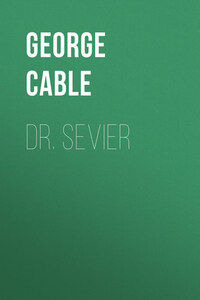The main road to wealth in New Orleans has long been Carondelet street. There you see the most alert faces; noses – it seems to one – with more and sharper edge, and eyes smaller and brighter and with less distance between them than one notices in other streets. It is there that the stock and bond brokers hurry to and fro and run together promiscuously – the cunning and the simple, the headlong and the wary – at the four clanging strokes of the Stock Exchange gong. There rises the tall façade of the Cotton Exchange. Looking in from the sidewalk as you pass, you see its main hall, thronged but decorous, the quiet engine-room of the surrounding city’s most far-reaching occupation, and at the hall’s farther end you descry the “Future Room,” and hear the unearthly ramping and bellowing of the bulls and bears. Up and down the street, on either hand, are the ship-brokers and insurers, and in the upper stories foreign consuls among a multitude of lawyers and notaries.
In 1856 this street was just assuming its present character. The cotton merchants were making it their favorite place of commercial domicile. The open thoroughfare served in lieu of the present exchanges; men made fortunes standing on the curb-stone, and during bank hours the sidewalks were perpetually crowded with cotton factors, buyers, brokers, weighers, reweighers, classers, pickers, pressers, and samplers, and the air was laden with cotton quotations and prognostications.
Number 3½, second floor, front, was the office of Dr. Sevier. This office was convenient to everything. Immediately under its windows lay the sidewalks where congregated the men who, of all in New Orleans, could best afford to pay for being sick, and least desired to die. Canal street, the city’s leading artery, was just below, at the near left-hand corner. Beyond it lay the older town, not yet impoverished in those days, – the French quarter. A single square and a half off at the right, and in plain view from the front windows, shone the dazzling white walls of the St. Charles Hotel, where the nabobs of the river plantations came and dwelt with their fair-handed wives in seasons of peculiar anticipation, when it is well to be near the highest medical skill. In the opposite direction a three minutes’ quick drive around the upper corner and down Common street carried the Doctor to his ward in the great Charity Hospital, and to the school of medicine, where he filled the chair set apart to the holy ailments of maternity. Thus, as it were, he laid his left hand on the rich and his right on the poor; and he was not left-handed.
Not that his usual attitude was one of benediction. He stood straight up in his austere pure-mindedness, tall, slender, pale, sharp of voice, keen of glance, stern in judgment, aggressive in debate, and fixedly untender everywhere, except – but always except – in the sick chamber. His inner heart was all of flesh; but his demands for the rectitude of mankind pointed out like the muzzles of cannon through the embrasures of his virtues. To demolish evil! – that seemed the finest of aims; and even as a physician, that was, most likely, his motive until later years and a better self-knowledge had taught him that to do good was still finer and better. He waged war – against malady. To fight; to stifle; to cut down; to uproot; to overwhelm; – these were his springs of action. That their results were good proved that his sentiment of benevolence was strong and high; but it was well-nigh shut out of sight by that impatience of evil which is very fine and knightly in youngest manhood, but which we like to see give way to kindlier moods as the earlier heat of the blood begins to pass.
He changed in later years; this was in 1856. To “resist not evil” seemed to him then only a rather feeble sort of knavery. To face it in its nakedness, and to inveigh against it in high places and low, seemed the consummation of all manliness; and manliness was the key-note of his creed. There was no other necessity in this life.
“But a man must live,” said one of his kindred, to whom, truth to tell, he had refused assistance.
“No, sir; that is just what he can’t do. A man must die! So, while he lives, let him be a man!”
How inharmonious a setting, then, for Dr. Sevier, was 3½ Carondelet street! As he drove, each morning, down to that point, he had to pass through long, irregular files of fellow-beings thronging either sidewalk, – a sadly unchivalric grouping of men whose daily and yearly life was subordinated only and entirely to the getting of wealth, and whose every eager motion was a repetition of the sinister old maxim that “Time is money.”
“It’s a great deal more, sir; it’s life!” the Doctor always retorted.
Among these groups, moreover, were many who were all too well famed for illegitimate fortune. Many occupations connected with the handling of cotton yielded big harvests in perquisites. At every jog of the Doctor’s horse, men came to view whose riches were the outcome of semi-respectable larceny. It was a day of reckless operation; much of the commerce that came to New Orleans was simply, as one might say, beached in Carondelet street. The sight used to keep the long, thin, keen-eyed doctor in perpetual indignation.









